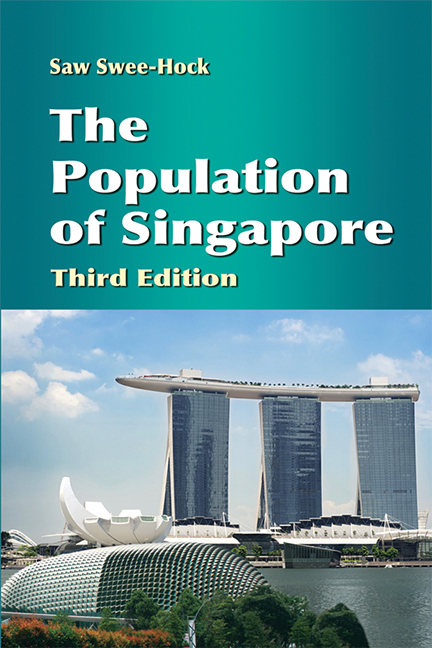Book contents
- Frontmatter
- Contents
- List of Tables
- List of Figures
- Preface
- Preface to Second Edition
- Preface to Third Edition
- 1 Background
- 2 Population Growth and Distribution
- 3 Changing Population Structure
- 4 Migration
- 5 Mortality Trends and Differentials
- 6 Marriage Trends and Patterns
- 7 Divorce Trends and Patterns
- 8 Fertility Trends and Differentials
- 9 Family Planning, Abortion and Sterilisation
- 10 Fertility Policies and Programmes
- 11 Immigration Policies and Programmes
- 12 Labour Force
- 13 Future Population Trends
- Appendix
- Bibliography
- Index
- Frontmatter
- Contents
- List of Tables
- List of Figures
- Preface
- Preface to Second Edition
- Preface to Third Edition
- 1 Background
- 2 Population Growth and Distribution
- 3 Changing Population Structure
- 4 Migration
- 5 Mortality Trends and Differentials
- 6 Marriage Trends and Patterns
- 7 Divorce Trends and Patterns
- 8 Fertility Trends and Differentials
- 9 Family Planning, Abortion and Sterilisation
- 10 Fertility Policies and Programmes
- 11 Immigration Policies and Programmes
- 12 Labour Force
- 13 Future Population Trends
- Appendix
- Bibliography
- Index
Summary
In this introductory chapter, we will present a concise account of the geography, history and economy of Singapore before commencing on the study of the population of the country. Some knowledge of these three aspects of the country will provide the necessary background information for a better appreciation of the population trends and patterns that will be discussed in the various chapters. The evolution of the population has indeed been intertwined with the geographical setting as well as the historical development of the country. We will also provide a brief description of the demographic information upon which this study is based so as to facilitate the interpretation of the statistical data included in the book.
GEOGRAPHICAL SETTING
The Republic of Singapore comprises the main island of Singapore and some 54 small islets within its territorial waters and jurisdiction. The country has a total land area of only 712.4 square kilometres, 500 of which are taken up by the diamond-shaped main island, which is 41.8 kilometres in length and 22.5 kilometres in breath. The overall population density in 2010 was 7,126 persons per square kilometre. Singapore is situated at longitude 103°50’ East and latitude 1°17’ North, and at the southern extremity of Peninsular Malaysia to which it is linked by the old rail-and-road causeway and a new bridge spanning the Straits of Johor. In its wider context, the Republic occupies a strategic position on the principal sea, air, telecommunications and trade routes between Europe and the Far East and Oceania.
The topography of Singapore is one lacking in contrast as the whole country is of very low elevation with a few small hills no higher than 166 metres. There are many rivers, with the larger ones, such as the Kranji and Seletar rivers, used as catchment areas for reservoirs, and, of course, the Singapore River which flows through the very heart of the city area. The lowland forests that used to cover the island in the early days have retreated with the advance of roads, houses, office buildings, factories and cultivated vegetation. What remains are some small pockets of protected reserves, such as the Bukit Timah Nature Reserve and the Kranji Reserve, totalling some 2,797 hectares.
- Type
- Chapter
- Information
- The Population of Singapore , pp. 1 - 6Publisher: ISEAS–Yusof Ishak InstitutePrint publication year: 2012



